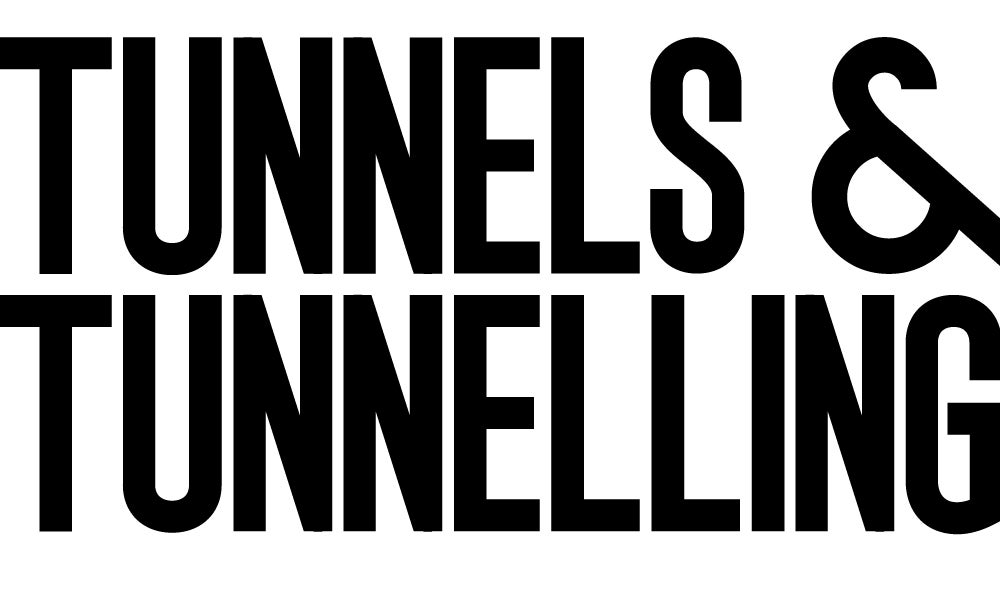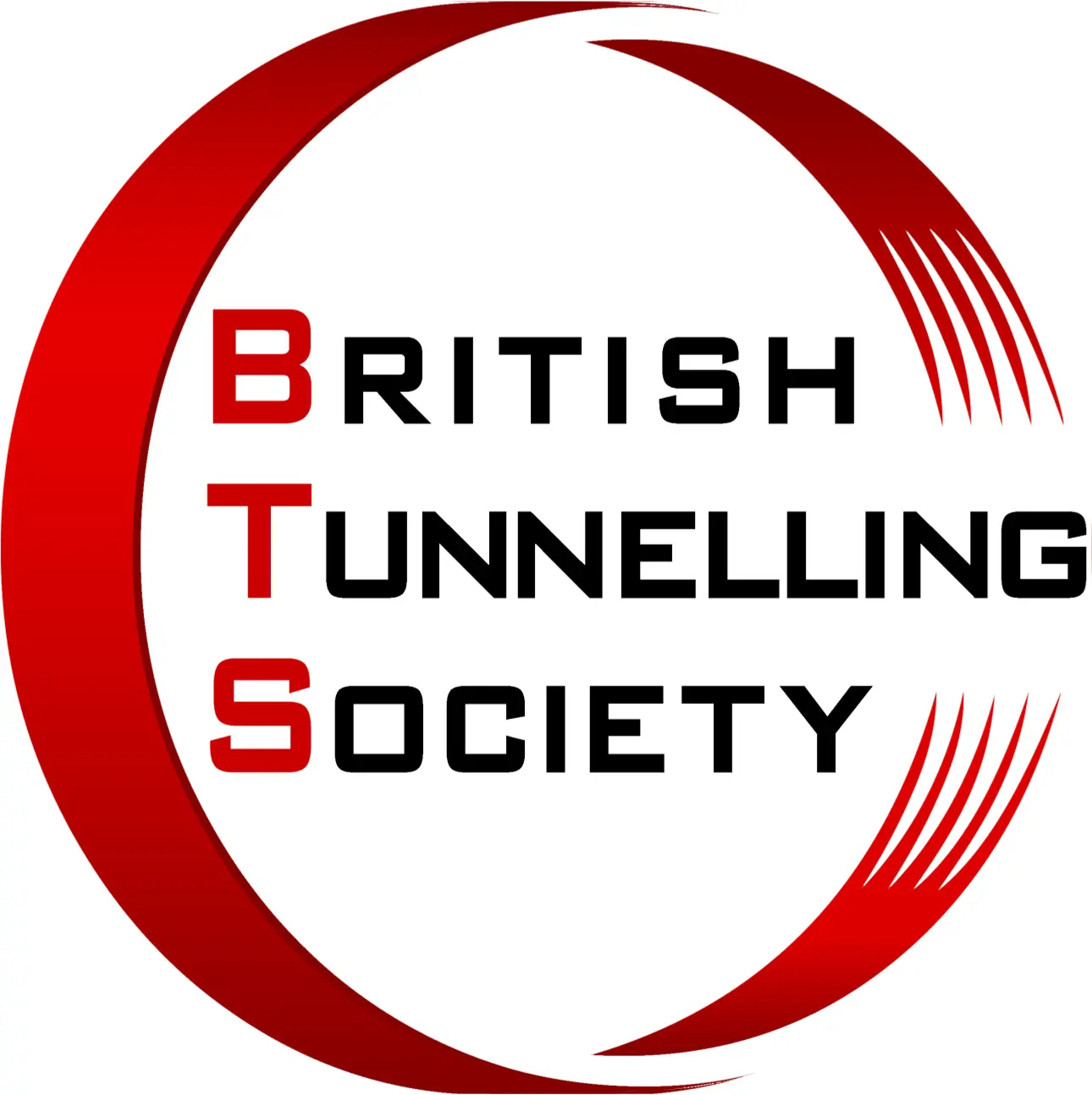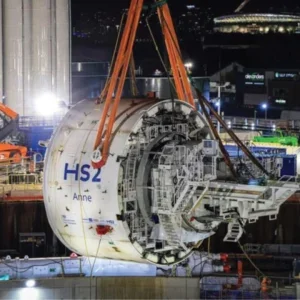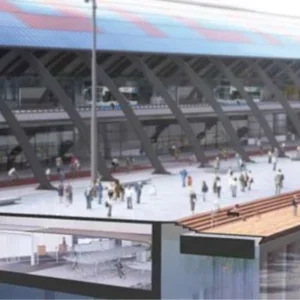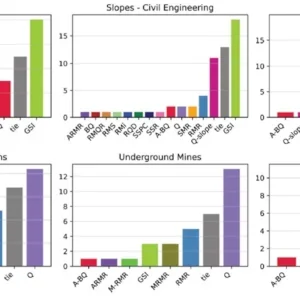BSOND STREET Station serves an interchange between London Underground (LU)’s Jubilee Line (JL), Central Line (CL) and the future Crossrail Station. A number of new tunnels will be built including two access shafts, one lift shaft, four construction adits, two binocular cross passage tunnels, four large concourse and connection chambers, three underpass tunnels, two over-bridge tunnels cutting through existing platform tunnels, two niches for electrical and mechanical equipment and four inclined tunnels for escalator barrels. This challenging design currently makes Bond Street Station Upgrade Project (BSSUP) one of the most complex tunnelling projects in the UK. The total length of tunnels amounts to approximately 450m, with tunnel widths ranging from 4m to 10.2m. The complexity of the project is not only due to the fact that the new tunnels are located in close proximity to many existing tunnels but also that the tunnels are situated in one of the most congested areas in London.
The BSSUP contractor was the Costain-Laing O’Rourke JV.
IMPORTANCE OF 3D-FE ANALYSIS
At RIBA-E design stage, in order to dimension the tunnel thicknesses and design construction stages, a series of 2D analyses over critical sections were undertaken. It is necessary to make certain assumptions in 2D analysis to take into account 3D geometrical effects, construction sequences and stress variations due to previous tunnelling activities. It is common practice to assume a so called relaxation factor in order to consider 3D effects in a 2D analysis. However all these assumptions are subjective, and depending on the complexity of tunnel geometry and subsoil condition, sometimes it is a difficult task to estimate a reasonable and sound factor in such complex tube system. In fact, there is no simple procedure to validate the assumptions other than performing a 3D analysis. In addition, since the plane strain conditions don’t exist at tunnel breakouts or tunnel connections therefore 3D analysis is necessary in these situations to analyse tunnel lining and ground stability.
Due to the complexity of BSSUP, the impact of new structures on third party assets are of great importance, comprehensive 3D analysis was inevitable at the detailed design stage (RIBA-F).
MODEL LAYOUT
Bond Street Station is an interchange point between two LU stations comprising platform tunnels, concourse and connecting tunnels with close proximity of each other and existing urban utilities such as post office tunnels, Thames water and sewer system. Upgrading the station affects the entire station and is very all-encompassing which makes the tube system even more complex. Due to hardware requirements, creating a large model covering all new tunnels in a single 3D-FE model was not feasible. Therefore three separate large FE models, FEM1, FEM2 and FEM3 whose boundaries are shown in Figure 1 were considered.
The _ ve typical London subsoil layers, made ground (2m), river terrace deposits (6m), London Clay A3 (11m), London Clay A2 (11m), Upper and Lower Lambeth Group (20m) build up the ground model according to the information provided in the _ nal Geotechnical Interpretative Report (GIR). The water table stands 6m below ground surface. The majority of the SCL tunnels are located within the London Clay stratum with a very low permeability.
Therefore undrained soil parameters are considered for the analysis of tunnel excavation stages and the primary lining installation. The primary lining is designed only to carry temporary loads and the final lining to sustain the probable long term loads, assuming that the primary lining deteriorates in time.
A general purpose FE software, ABAQUS 6.10, was used to build and analyse the models. The Mohr-Coulomb material model was adopted for the soil layers. Models FEM1, FEM2 and FEM3 contain approximately 450,000, 600,000 and 1M solid tetrahedral linear elements. Excavation is simulated mostly as full face, and in parts where a temporary invert was required, the excavation is divided into top-heading and benchinvert sequences. The overburden ranges from 11m to 33m. Sprayed concrete is modelled using three-noded triangular shell elements. Models FEM1, FEM2 and FEM3 contain 238, 255 and 178 calculation steps respectively.
In these large FE models it has been tried to emphasise on the detailed excavation sequences, extent of the model, and FE mesh density rather than employing advanced constitutive models. Dr Sauer & Partners’ experience has shown that in such ground conditions, the Mohr-coulomb material model is able to yield reasonable results and successful predictions for ground and tunnel structures if FE analysis is carried out with total stress analysis under undrained material conditions [4]. In addition, the consideration of the linear increase of both undrained shear strength (Cu) and Young modulus (Eu) of London Clay stratums with depth improves the precision of the model. MODELLING APPROACH
The numerical analyses have been undertaken on the basis of a total stress analysis and no water pressure is produced during the analysis. However the hydrostatic water pressure is applied normal to the secondary lining subsequent to degrading the primary lining. Based on the interpretation from the GIR report [5] the water table is assumed to be 6m below ground surface.
Prior to activating the secondary lining in the model, the primary lining becomes sacri_ cial by setting its stiffness to one per cent of the original value, hence the loads undertaken by primary lining become negligible and the loads are transferred to the secondary lining. For the purpose of the primary SCL design no groundwater pressure was applied in the analysis since the primary lining is not considered to be watertight. Undrained soil parameters were taken for the analysis in order to account for the ‘fast’ construction in comparison to the time required for consolidation in London Clay.
The excavation and lining installation of one advance is performed in two steps; i.e., the soil is removed in the first step and the lining installed in the second step. The advancing sequential excavation was modelled using multiple analysis steps summarised as follows.
- In-situ ‘free _ eld’ condition
- Excavation and installation of existing structures
- Excavation and installation of the SCL structures according to the design at stage RIBA E
- Installation of the secondary lining & degrading primary lining
- Applying long term conditions (including surcharge load on the ground surface and water pressure). The SCL tunnel construction in the model commences after the simplified modelling of pre existing structures. This was modelled through a stiffness reduction of 50 per cent for elements originally located within the pre existing structures and the subsequent element removal and cast iron/brick and mortar lining installation.
- The existing cast iron structures are modelled using structural shell elements. The shell elements used in the model are characterised by the cross sectional area to achieve the same bending stiffness as the reduced bending stiffness calculated according to LU standard 1-055 to take account for segment connections and imperfections [6].
LINING SYSTEM AND DESIGN CONCEPT
The lining system for the SCL tunnels at BSSU consists of a primary lining, a sprayed waterproofing layer and a secondary lining. Both primary and the secondary lining are sprayed concrete reinforced with steel fibres. The lining system is designed using a primary lining system to provide stability during the excavation phase and a final lining system supporting all permanent loads. However, the invert of the secondary linings will be cast.
The idea of using steel fibre reinforced sprayed concrete (SFRC) is to reduce additional bar reinforcement. Sprayed concrete without bar reinforcement has benefits including: A. Uniform and homogenous lining – Spraying concrete around bar reinforcement brings about shadow voids or poor consolidation behind steel reinforcement, therefore bond strength issues.
B. Time saving – As no bar reinforcement needs to be installed for each final lining section.
C. Cost saving – As final lining reinforcement does not need to be erected in a separate work sequence.
D. Lining durability – The uniform distribution of steel fibre reinforcement in the final concrete lining ensures uniform micro-crack distribution in the lining and reduces the crack width of these cracks. E. Safety improvement – Avoiding working at height required for bar reinforcement installation.
SFRC will provide considerable post-crack load bearing capacity. On the other hand, a high level of indeterminacy is inherent in tunnel structures, which allows stresses to redistribute within the shell. Therefore as long as the predicted strains in the linings are within allowable limits, post-crack capacity may be exploited to reduce the amount of bar reinforcement required in the linings. Bar reinforcement will only be required where strains exceed allowable limits Figure 3 illustrates the idealised material behaviour of steel fibre reinforced concrete in terms of Stress- Strain relationship. The compressive part of the curve is very similar to normal concrete. However, the tensile part exhibits a considerable ductile behaviour with a constant residual post-crack load bearing capacity. In order to model the effect of steel fibres in a concrete section under bending, the Austrian Guideline for fibre reinforced concrete [6] will be used. The behaviour of concrete under compression follows EC2 [1].
The residual strengths in tension will be calculated using the model stated in the Austrian Guideline. To ensure sufficient ductility is attained, flexural testing is required to demonstrate that at crack mouth openings of 0.5mm and 3.5mm, sufficient residual flexural strength is maintained [7]. This corresponds to an extreme fibre tensile strain of 2.5 per cent, which is the equivalent to that of reinforced concrete at ultimate limit state (ULS). That is, the SFRC must be able to withstand similar defiections to reinforced concrete without collapse; however the load carrying capacity of the fibres is conservatively truncated at one per cent tensile strain for the ULS.
Sprayed concrete is modelled as elastic-plastic material. The reaction of the material is ideally elastic as long as the peak values of compressive and tensile strength have not been reached.
Residual strength parameters were considered in a post failure condition of the material. For instance, tension cut-off 0.4MPa is considered for the tunnel linings based on the sprayed concrete grade and the SFRC beam test specifications provided in the Design Statement. The ‘concrete damaged plasticity model’ was therefore employed in the model to satisfy this material behaviour [2]. It is a damage material model for concrete which assumes that the main two material failure mechanisms are tensile cracking and compressive crushing.
SERVICEABILITY LIMIT CHECK
In addition to enhancing toughness and ductility, steel fibres can provide postcrack load-carrying capacity as:
- The randomly distributed fibres in the concrete intercept micro-cracks as they form, inhibiting the tendency for larger cracks to form.
- After cracking, the fibres that span the crack will provide residual loadcarrying capacity providing the potential for Elasto-plastic properties to be considered in the design.
- Also the fibres can reduce the formation of cracks due to drying and early age thermal cracking.
To satisfy serviceability criteria for the secondary lining, the strains obtained from the 3D FE model can be used to predict crack widths. As per the German guideline [3] for fiber reinforced concrete without steel bar reinforcement the crack width can be calculated as follows:

Requirements for using this equation are an indeterminate structural system and/or a system with a permanent compression zone.
Using the spacing sw we can limit the strains in tension to achieve a required calculated crack ![]() width to:
width to:

For example, with a crack width of 0.3mm, tensile strains in the secondary lining would be limited to 0.21 per cent. Bar reinforcement and/or thickening is required where compressive strains predicted by the models exceed allowable strains.
RESULTS
For each individual model, necessary calculation steps have been set up in accordance with the actual construction sequences. Calculation of all excavation phases has been completed and the model has reached equilibrium and stability at each individual construction phase. Nonlinear analysis of the tunnel linings were performed using concrete damage plas constitutive model. In the non-linear analysis, it is preferred that plasticity is allowed only for tensile stresses, and in compression the material remains elastic. The reason is that plastic section analyses require rotation capacity check based on EC2 which is a significant amount of work for a complex structure. Furthermore, the SCL failure mode in compression is brittle and unwanted. Tensile stress in the lining is limited to the allowable flexural strength (herein, 0.4MPa) in order to take the most advantage of steel fibers. When the FE calculation is completed and it reaches equilibrium, it implies that the lining is fine in terms of tensile stresses. However, the allowable strains should be checked by the designer.
ABAQUS post-processor enables us to check the strains at intrados and extrados of the shell elements where the maximum strains are expected. Sprayed concrete grades C30/37 and C40/50 are used for the primary and secondary lining respectively, which allows for a maximum compressive stress of 15MPa for primary lining and 16.8MPa for the final lining. Since the section forces of the lining extracted from the model are unfactored, for design check purposes the concrete strength capacity is factored by both material and load partial factors (1.35×1.5). In the calculation of allowable compressive stresses in the final lining, the long-term factor 0.85, based on the British Appendix in EC2, has been considered [1].
Over-stressed lining around the breakouts can be readily identified in the 3D model. Figure 5 depicts the principal stresses in large chambers with several openings. Based on the tensile and compressive capacities of the sprayed concrete, linings have been thickened around the large openings accordingly.
CONCLUSION
Through the constant advance of reliable software and powerful computer processors, 3D FE analyses are more frequently used in the design of complex tunnels. One of the great merits of a 3D model is to avoid applying subjective assumptions about the 3D effects of excavation sequencing and tunnel geometries. Comprehensive 3D analysis is now often demanded not only from the designer’s side but also from the client’s standpoint. Large 3D models can tackle the design challenges of complex SFRC tunnel linings and assist in drawing realistic conclusions on the necessity of steel bar use in the lining; face stability; adequacy of ground support; and ground movement
